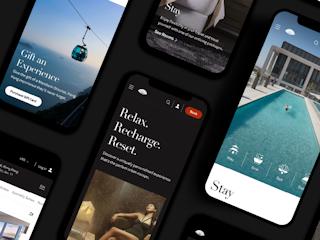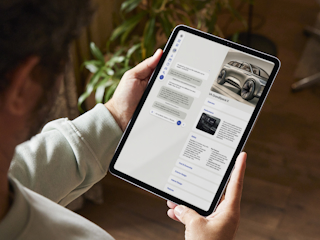October 26, 2020
AI and automation tools have been debated for quite some time. On one hand, they improve processes. On the other hand, some fear that automation tools will eliminate jobs, create inconsistent product quality or even counterfeit connections.
How AI Can Bring the Core of Luxury Brands to the Surface
We do not hear much about how automation tools may increase the “aura of luxury” by opening the floor for brands to return to their original craft. By progressing into the future and utilizing AI, brands can refocus this newfound time on "design-making" from the bedrock. This shift brings the core of luxury to the surface: craftsmanship and the artistic dimensions of products.
As AI, robotics, 5G and digital realities solidify themselves within our foundational technology toolset, we are able to gather deep learnings on not only human actions and behaviors but the emotional and physical drivers behind them. These learnings allow a user's journey to go beyond a click or email signup, and instead mature the way in which the brand to customer relationship is maintained.
Creating the Best User Journey for the Luxury Customer
Consider a luxury customer user journey similar to that of a fine dining experience. The journey is composed in various formats and across all phases: before, during and after, and at its heart is true hospitality.
Before the Experience
For example, say you’re scrolling through your friend’s Instagram account. You see they posted a picture of a delicious-looking steak tartare in a restaurant unfamiliar to you. You click the location and discover a new place has recently opened up in your neighborhood. You immediately decide you want to check the place out and ask another friend to join you. The direct booking link through the restaurant’s profile allows you to make a reservation and instantly marks your e-calendar. The day before your visit you receive a reminder of your reservation time. You ping your friend and both look forward to the night ahead.
During the Experience
Once you arrive, the staff can see that you booked the reservation from a friend's photo (remember that steak tartare!) and can make a soft suggestion to get started with a Blanc de Noir Champagne to complement the dish.
Now, it’s reasonable to assume your fine dining experience was enjoyable for many reasons. It feels good checking a Michelin star restaurant off your list or posting proof that you scored a reservation while friends remain on the waiting list. But the pivotal "Moment of Truth" occurs when a customer comes into contact with any aspect of a company and forms an impression. And for this example, the fabulous dining experience imprinted upon your mind. You feel special because you are special to the staff, appreciated by the brand, taken care of, and connected with the personality of the establishment itself.
After the Experience
A week later you receive a direct communication from your friends, i.e. the restaurant staff, that they just added a dish inspired by Magnus Nilsson’s famous grilled oysters! You immediately book your next reservation and share the date with your friend.
Delighting Digitally by creating Intensive Personal Relationships Between Customer and Brand
By taking a digitally-powered analog approach, retailers create intensive personal relationships between customer and brand. Our world is moving toward developing a 1:1 interface between the physical and digital. We are matching emotions to sensor detectors and retail traffic to store heat maps. We are connecting technology with physical space to feed experiences that will become intrinsic to human nature.
At Valtech, we develop tools that make it possible for our clients to track the physical and emotional behaviors that are directly linked to online journeys. This capability enables us to learn more about habits, routines, tastes and practices. Through developing predictive intelligence based on behaviors, we establish organic integration into customers’ lives. This intelligence translates to adapting and shaping their reality rather than attempting to insert foreign actions into their patterns.
These learnings lead to a business transformation that considers the true impact of how “human-technology interactions” can improve the customer-facing experience as well as internal business operations.
The efficiencies in understanding human behavior via technology allow luxury brands to refocus their purpose from “keeping up with digital,” to lacing their essence within everyday customer lives. These capabilities pave a path to merge closer to our customer and increase internal performance.
Creating Our World, Artfully and Innovative
Creativity and innovation are often met head on with reviews and deadlines. But the reality is that employees have evolved away from these parameters. Rather than replacing jobs, innovation elevates positions to more strategic roles. It uplifts the workforce, allowing time to be spent on envisioning our future. Imagine a workforce that actually takes the time to revert back to the drawing board, replacing the mouse with pen and paper to artfully create our world rather than reacting to it.
By introducing the new wave of digital tools, we marry the old with the new to garner bespoke experiences for consumers and increase operational productivity. Brands can increase output while freeing up time to allow creativity to thrive. Maybe not 100% free of those urgent deadlines, but at least a step closer!








